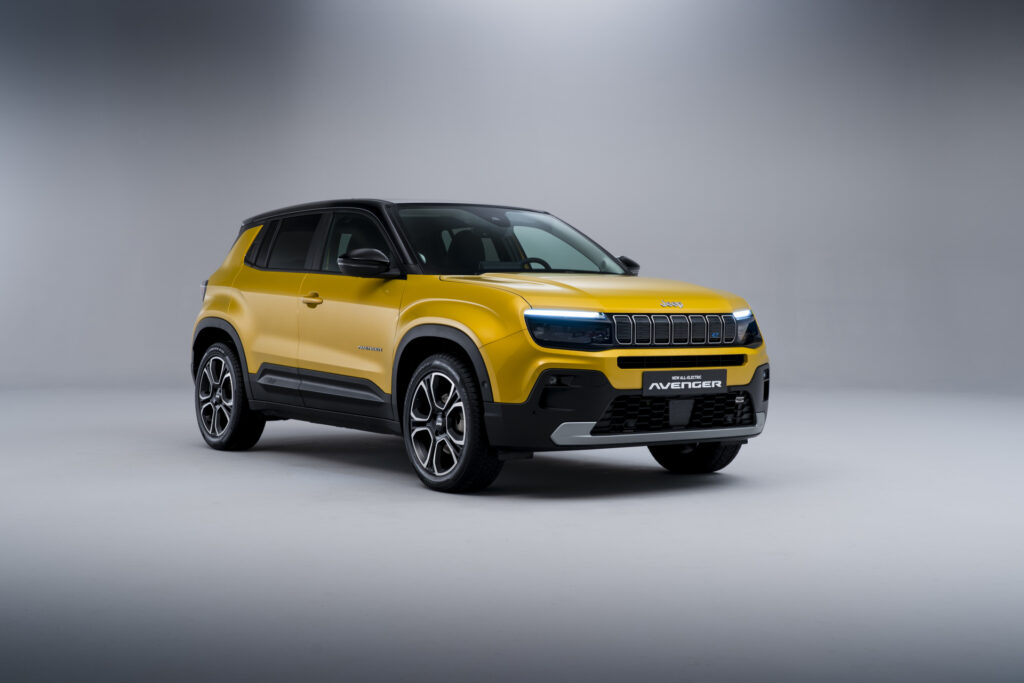UK LCV registrations keep growing as used market softens in April
15 May 2023

Registrations of new light-commercial vehicles (LCVs) in the UK continue on an apparent upward path as the used-vehicle market shows signs of softening. Andy Picton, chief commercial vehicle editor at Glass’s (part of Autovista Group) explores the latest figures.
For the fourth consecutive month, April saw the UK’s new-LCV market grow, with registrations rising by 4.9% year on year to 22,665 units. This ongoing growth means 2023 continues positively for the UK’s LCV market, with 109,937 units registered during the first third of the year, corresponding to a 14.6% increase on the same period 12 months ago.
This scene needs some perspective and is set against a particularly poor April in 2022, when protracted raw material and supply-chain shortages hindered production and deliveries. Despite the rise in demand and a more normalised production schedule, some challenges will remain for a while.
Registration performance across different vehicle types was also mixed last month. The pickup, vans under two tonnes gross vehicle weight (GVW) and vans between 2.5 and 3.5 tonnes GVW fell by 7.6%, 48.2% and 6.2% respectively. However, with 15,205 units registered, the latter remained the largest with a 67.1% market share. Registrations of vans 2-2.5 tonnes GVW more than doubled, achieving a 103.5% increase (4,318 units), whilst the 4×4 sector rose by 370.5% (574 units).
Market struggles despite improvements
While registration numbers were positive, the entire UK automotive industry is still trying to build itself back up to pre-COVID-19 levels. Therefore, a comparison with 2019 is required to track this recovery. Registrations showed growth last month with figures down only 13.7% on April 2019. However, challenges that caused disruption are starting to ease and will continue to do so towards the end of the year, with a market recovery expected in 2024.
There was a sizeable 62.6% increase in battery-electric van registrations for April, with 1,494 units registered, up 575 units on 12 months ago. Year-to-date, all-electric van registrations are 14.8% up on a year ago (5,987 units), with a market share of 5.4%, which has not changed compared to the first four months of 2022.
The Society of Motor Manufacturers and Traders (SMMT) had set a target of 28,000 all-electric units to be registered in the LCV market this year. However, the UK industry body has now revised its forecast downwards, from an 8.6% market share to 7.4%. It believes the sector will struggle as high energy costs, limited incentives and inflationary pressures continue. The struggle with dedicated infrastructure for LCVs is also continuing to play on the minds of buyers, along with a delay in grid connections.
The SMMT expects electric vans to comprise 11.3% of registrations in 2024, however, this is also down on the 12.2% forecast from January. A Zero-Emission Mandate, created by the UK government, is due to come into force at the beginning of next year meaning there must be a rapid increase in the sale of BEVs and the infrastructure to support them.
Looking at brand sales, Ford continued their dominance in the UK market, with the Transit Custom and Transit retaining first and second positions across registrations in April, while the Ford Ranger placed in fifth. The Stellantis Group saw the Vauxhall Vivaro finish as the third most-registered model last month, the Citroen Berlingo in fourth, the Peugeot Partner seventh (1,041 units) and the Peugeot Expert in 10th with 884 units registered. The Mercedes-Benz Sprinter claimed sixth spot with 1,046 units, the Renault Trafic eighth (996 units) and the Volkswagen Transporter ninth (949 units).
Used-LCV market softens
Following a strong first quarter in 2023, there are definite signs of the used-LCV market softening. Traders who bought in increased numbers during those first three months of the year are now easing back, preferring to sell some stock before buying again. Demand for the best stock has seen average prices continue to increase, but conversion rates are down to their lowest level since the beginning of the year.
Sales have decreased by nearly 19% versus March but are 15% higher than at the same point 12 months ago when the market was suffering during the worst of the supply-chain shortages. Average sales prices increased by 0.55% during April but sit nearly 1.9% below April 2022.
As with previous months, the used medium-van segment was the most popular. These models accounted for 35.1% of all auction sales, while 4x4 stock was again the least popular (16%) but attracted the strongest average sales prices of £14,933 (€17,167), up £130 on March.
The average age of vehicles sold during April increased by 0.1 months to 82.1 months, with the average mileage of those vehicles sold falling by 2.05% to 82,818 miles (133,282km). This is just over 1,100 miles higher than 12 months ago. Large panel vans unsurprisingly covered more distance than any other model type, averaging 89,429 miles, a 4,150-mile reduction on March.
First-time conversion rates for April fell 1.5% to 81% overall but remained 10.2% higher than 12 months ago. All segments recorded a decrease, with small vans returning the best conversion rate of 83.8% (down 2.3% on March). Medium vans recorded no change at 81.8%, 4x4 pickups 78% (down 5%) and large panel vans 76.3% (down 0.1%).
Used vehicles observed for sale in the wholesale market last month rose sharply by 5.1% to nearly 41,200 units. 51% of all vehicles on sale were valued at £20,000 or more, while 33% were on sale for between £20,000 and £10,000. At the lower end of the market, 11.8% of all vehicles were on sale for between £10,000 and £5,000. Those on sale for less than £5,000 remained static at 4.2% of the overall market.



